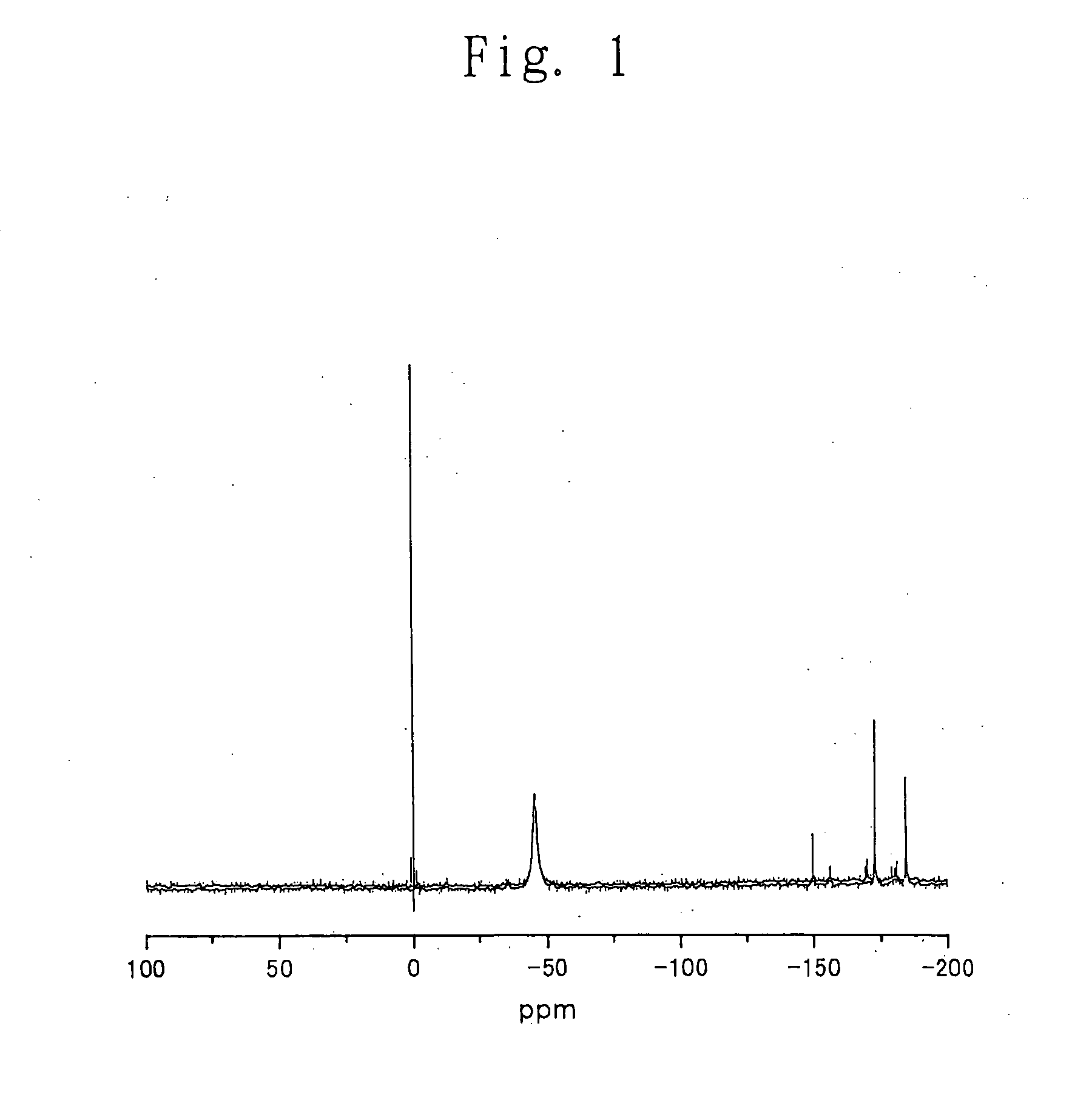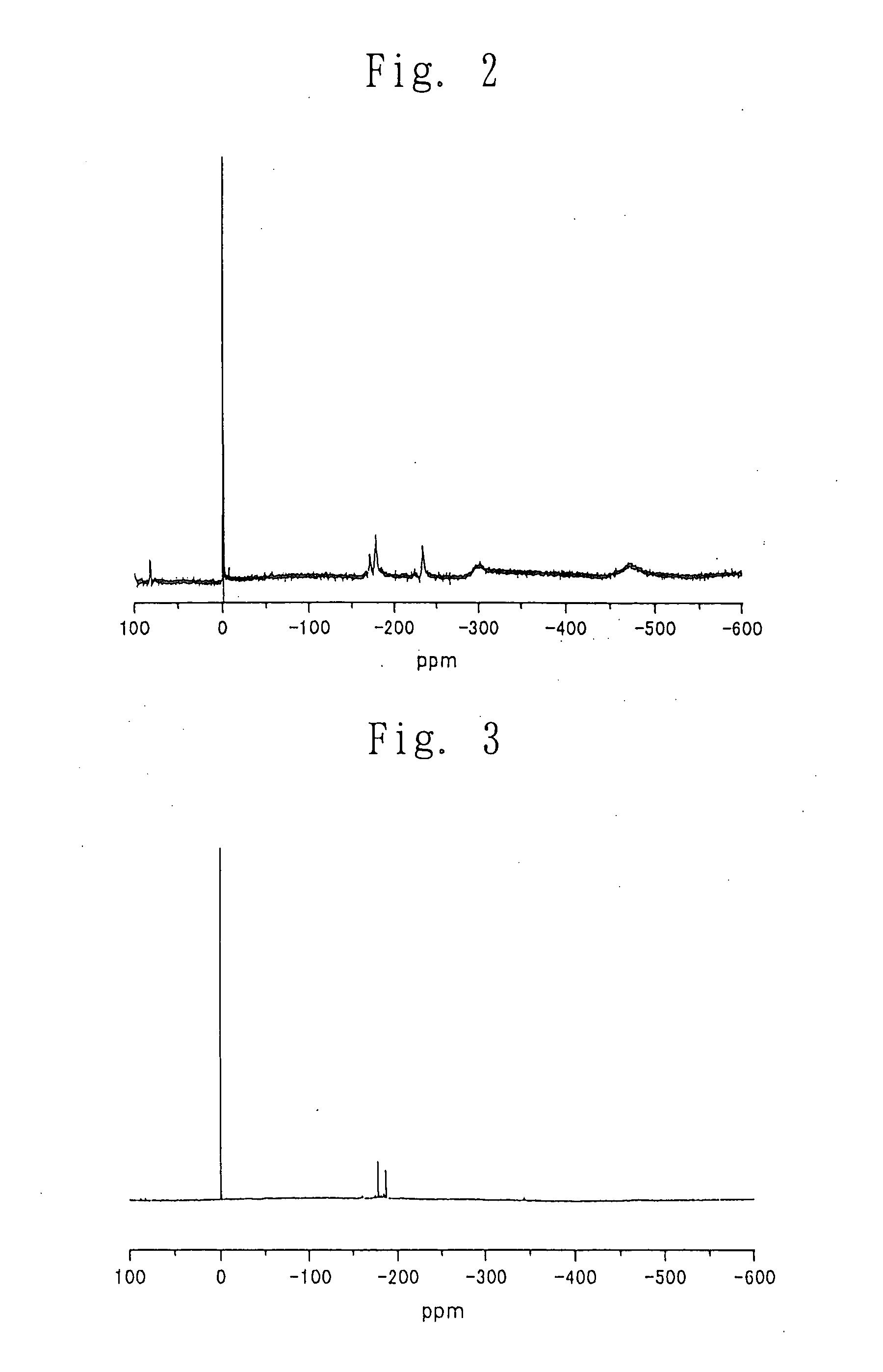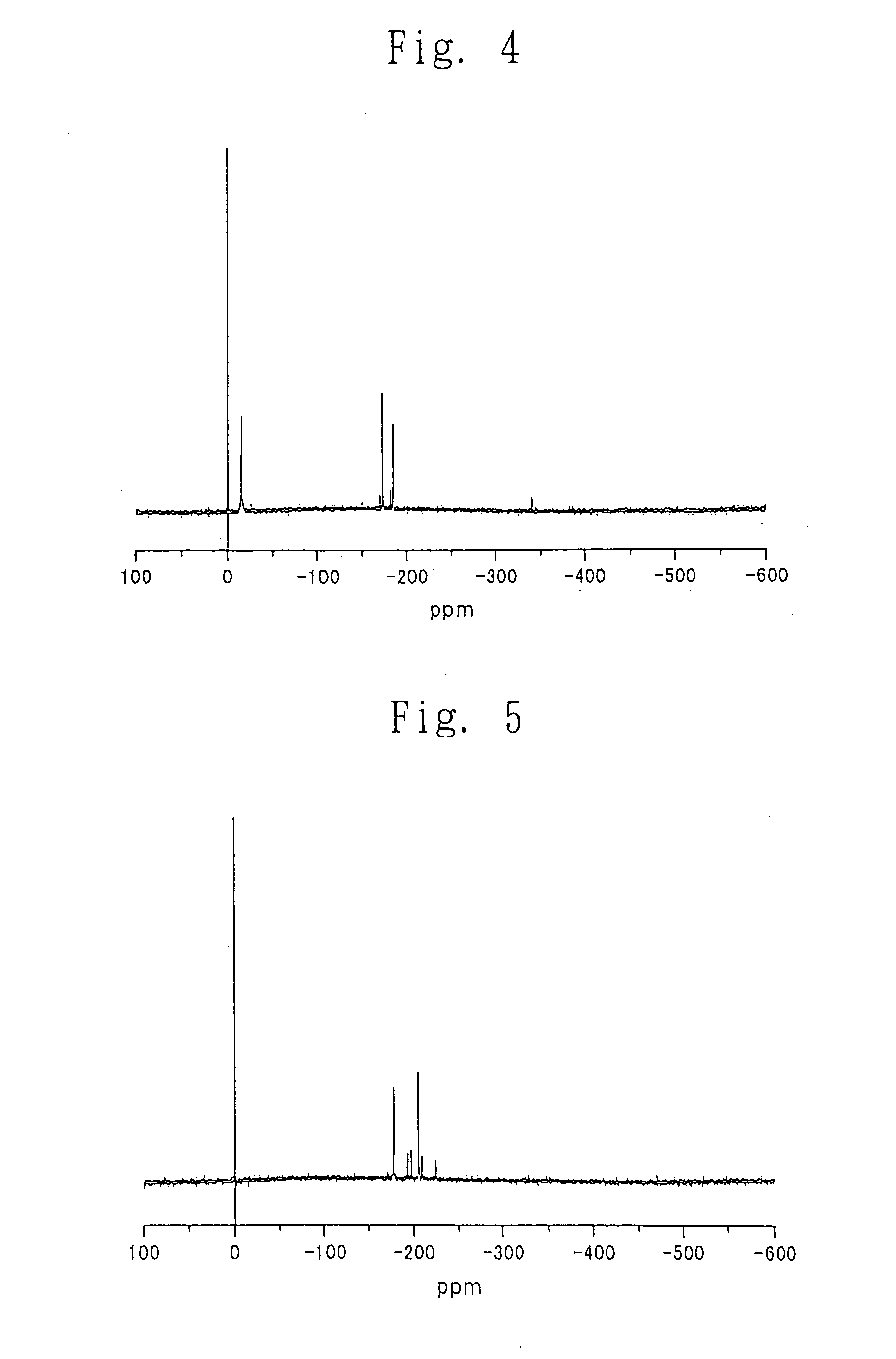Process for producing carbonic ester
a technology of carbonic ester and carbon dioxide, which is applied in the field of producing carbonic ester, to achieve the effect of easy separation from the organometal compound and high yield
- Summary
- Abstract
- Description
- Claims
- Application Information
AI Technical Summary
Benefits of technology
Problems solved by technology
Method used
Image
Examples
example 1
(Synthesis of an Organometal Compound Having a 2-ethyl-1-hexyloxy Group)
Into a 200-ml autoclave (manufactured and sold by Toyo Koatsu Co., Ltd., Japan) were charged 29 g (116 mmol) of dibutyltin oxide (manufactured and sold by Aldrich, U.S.A.) and 75 g (576 mmol) of 2-ethyl-1-hexanol (manufactured and sold by Aldrich, U.S.A.). The atmosphere in the autoclave was purged with nitrogen gas. Then, stirring of the contents of the autoclave was started, and the internal temperature of the autoclave was elevated to 192° C. A purge line was opened, and the stirring was continued for 3.5 hours under atmospheric pressure while distilling off water and 2-ethyl-1-hexanol. After that period, there was almost no distillate any more. Then, the inside of the autoclave was cooled to about 30° C. while purging the atmosphere in the autoclave with nitrogen gas, and there was obtained a reaction mixture containing an organometal compound having a 2-ethyl-1-hexyloxy group. The amount of the liquid (d...
example 2
As described below, dimethyl carbonate was produced by performing a cycle of steps (1) to (4) 26 times consecutively.
(Synthesis of an Organometal Compound Having a hexyloxy Group)
There was provided a 200-ml autoclave (manufactured and sold by Toyo Koatsu Co., Ltd., Japan) which had connected thereto a line for introducing a liquid carbonic acid and carbon dioxide gas, a distillate withdrawal line, a sampling tube and a line for introducing nitrogen gas into the bottom of the autoclave. Into the 200-ml autoclave were charged 15.0 g (60 mmol) of dibutyltin oxide (manufactured and sold by Aldrich, U.S.A.) and 30.7 g (300 mmol) of hexanol (manufactured and sold by Aldrich, U.S.A.; a dehydrated grade). The autoclave was sealed and all valves were closed. The atmosphere in the autoclave was purged 3 times with nitrogen gas. Then, stirring of the contents of the autoclave was started, and the internal temperature of the autoclave was elevated to 160° C. Then, the stirring was continue...
example 3
(Synthesis of an Organometal Compound Having a 2-ethyl-1-hexyloxy Group)
Into a 500-ml eggplant-shaped flask were charged 105 g (422 mmol) of dibutyltin oxide (manufactured and sold by Aldrich, U.S.A.) and 277 g (2.1 mol) of 2-ethyl-1-hexanol (manufactured and sold by Aldrich, U.S.A.). The eggplant-shaped flask was connected to a rotary evaporator (manufactured and sold by EYELA, Japan). The atmosphere in the eggplant-shaped flask was purged with nitrogen gas. Rotation of the eggplant-shaped flask in an oil bath was started, and the oil bath was heated to 180° C. During the heating, a white slurry in the eggplant-shaped flask turned into a transparent solution. Then, the rotation of the eggplant-shaped flask was continued for about 30 minutes. Thereafter, the internal pressure of the eggplant-shaped flask was gradually lowered from 80.7 KPa to 68.7 KPa over 3 hours by means of a vacuum pump (manufactured and sold by SATO VAC INC., Japan) and a vacuum controller (manufactured and s...
PUM
| Property | Measurement | Unit |
|---|---|---|
| Temperature | aaaaa | aaaaa |
| Fraction | aaaaa | aaaaa |
| Fraction | aaaaa | aaaaa |
Abstract
Description
Claims
Application Information
 Login to View More
Login to View More - R&D
- Intellectual Property
- Life Sciences
- Materials
- Tech Scout
- Unparalleled Data Quality
- Higher Quality Content
- 60% Fewer Hallucinations
Browse by: Latest US Patents, China's latest patents, Technical Efficacy Thesaurus, Application Domain, Technology Topic, Popular Technical Reports.
© 2025 PatSnap. All rights reserved.Legal|Privacy policy|Modern Slavery Act Transparency Statement|Sitemap|About US| Contact US: help@patsnap.com



